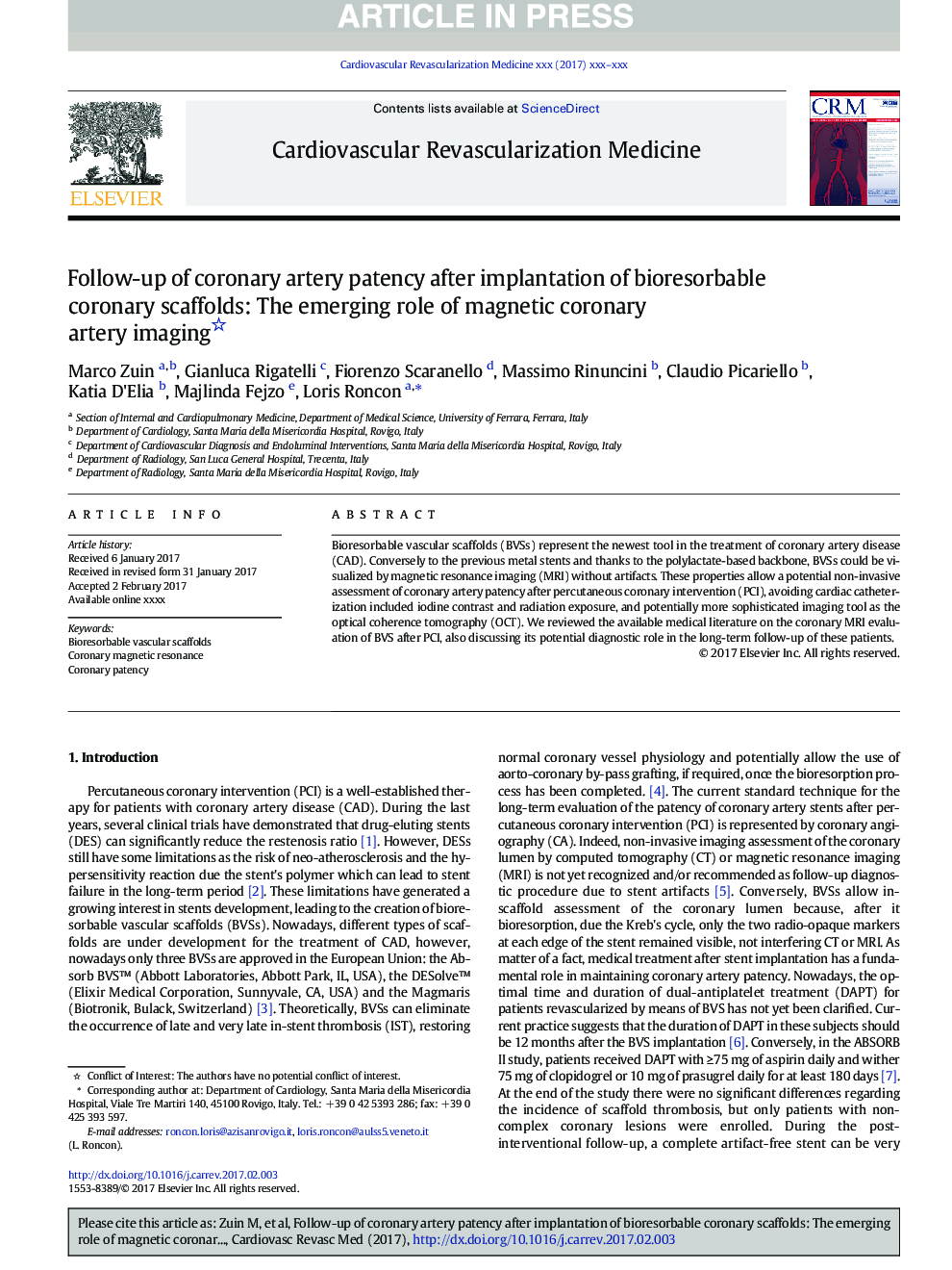| Article ID | Journal | Published Year | Pages | File Type |
|---|---|---|---|---|
| 5592756 | Cardiovascular Revascularization Medicine | 2017 | 5 Pages |
Abstract
Bioresorbable vascular scaffolds (BVSs) represent the newest tool in the treatment of coronary artery disease (CAD). Conversely to the previous metal stents and thanks to the polylactate-based backbone, BVSs could be visualized by magnetic resonance imaging (MRI) without artifacts. These properties allow a potential non-invasive assessment of coronary artery patency after percutaneous coronary intervention (PCI), avoiding cardiac catheterization included iodine contrast and radiation exposure, and potentially more sophisticated imaging tool as the optical coherence tomography (OCT). We reviewed the available medical literature on the coronary MRI evaluation of BVS after PCI, also discussing its potential diagnostic role in the long-term follow-up of these patients.
Keywords
Related Topics
Life Sciences
Biochemistry, Genetics and Molecular Biology
Molecular Medicine
Authors
Marco Zuin, Gianluca Rigatelli, Fiorenzo Scaranello, Massimo Rinuncini, Claudio Picariello, Katia D'Elia, Majlinda Fejzo, Loris Roncon,
